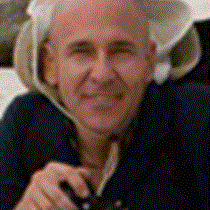Bartolome and Rabida Islands
An early morning walk to the summit of Bartolomé Island started our day. The sun was rising behind the clouds and as soon as we landed on this desolate island we appreciated how hard it is for life to survive on these islands. The lava fields next to us looked lifeless, but not for too long, as suddenly a little lava lizard began to move. Reaching the summit took some work, and faster heartbeats, but the sight from the top was impressive and worth the effort. Besides being able to see the whole island of Bartolomé we also saw parts of Santiago Island in front of us and the nearby islands.
After returning from the walk it was time for breakfast and a little rest. Then more action awaited, this time it was time to get in the water and enjoy the marine life of the Galapagos Islands. We embarked on the Zodiacs carrying all the necessary gear and headed to a small sandy beach from which we will leave to explore the underwater realm.
The highlight was when some snorkelers encountered penguins as they glided underwater, it was a hot morning, so everyone enjoyed being in the water no matter what. During the afternoon, after arriving at Rabida Island, some made new friends; the ever playful sea lion gracefully swam around the snorkelers.
While some explorers choose snorkeling others decided to go kayaking, and had several blue footed boobies plunge diving around the kayaks. Along the shore three great blue herons rested on the rocks, one was picking material to build a nest and another one was already sitting on a nest.
As we walked along the beach we saw the beginning of a “feeding frenzy.” The brown pelicans and blue footed boobies started to dive into the ocean, took off and dived again, suddenly more and more seabirds arrived to the area, and dived and took off again and again. Other brown pelicans rested on the beach, moving very close to us. To increase the level of activity along this walk several Galapagos mockingbirds began a small territorial fight, lots of sounds and postures displayed, after a while it was over and each group understood where the edge of their territory ended.
We returned back to the landing site and started to get onboard the Zodiacs, but it was not over yet, and as we returned back to the National Geographic Islander the feeding frenzy began again, this time with even more seabirds diving into the sea, trying to use the last light of the day to get food. A great way to finish another day in this paradise.




